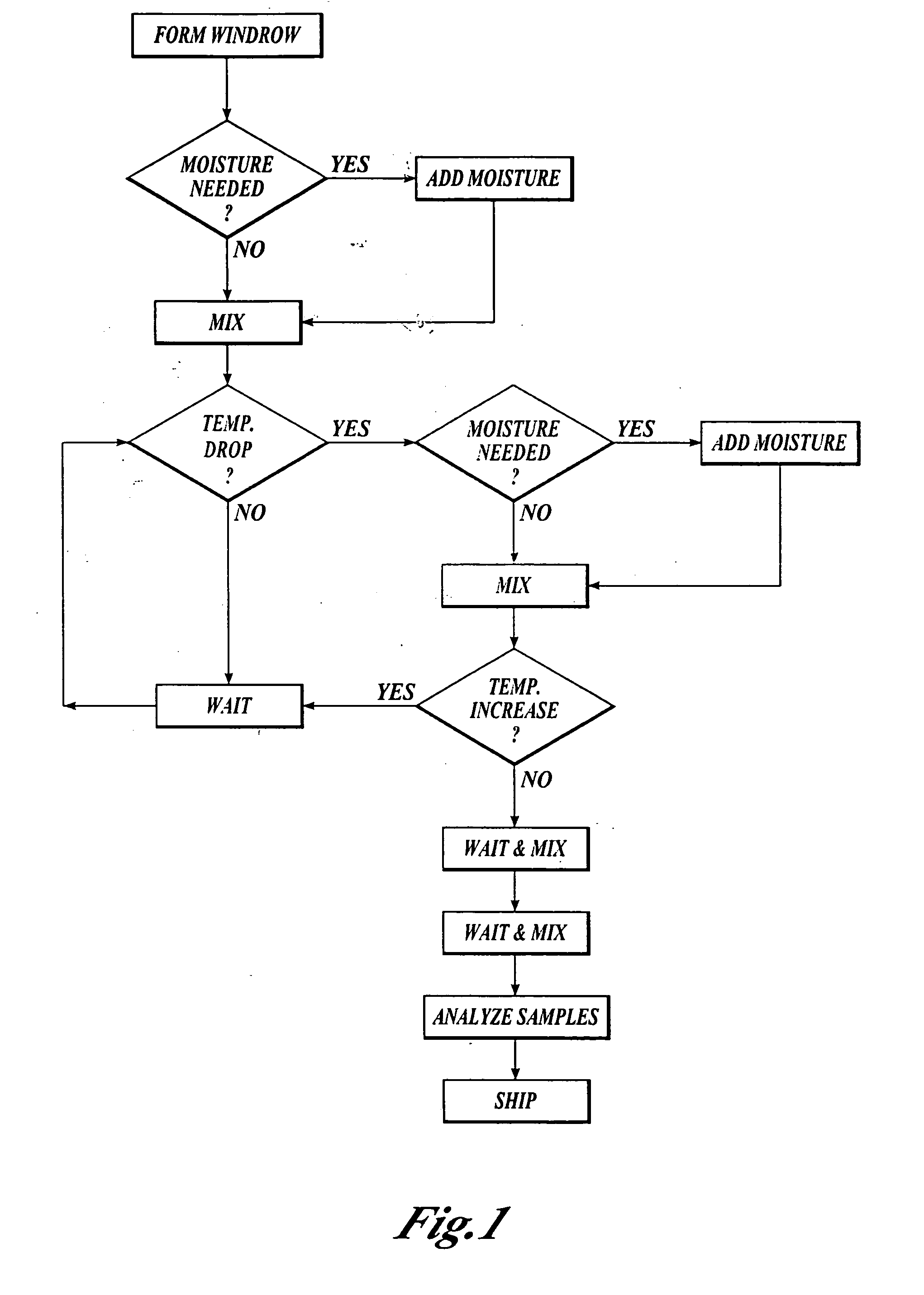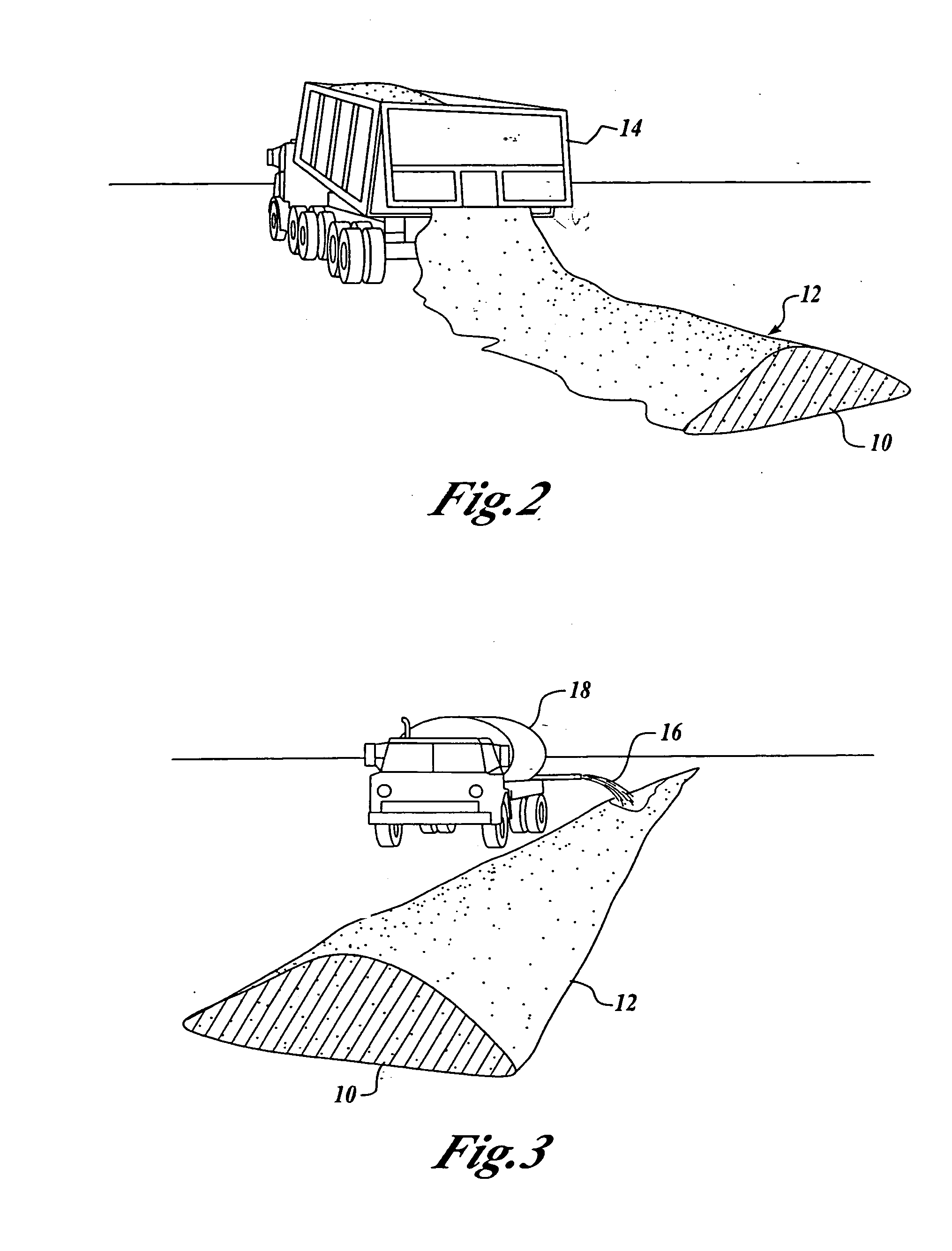Cattle waste composting
a technology of beef waste and composting method, which is applied in the field of large-scale composting of beef waste, can solve the problems of unsatisfactory crop producers, lack of uniformity, and high content of weed seeds, and achieve the effect of reducing labor input, reducing time period necessary for creating compost, and increasing temperature monitoring
- Summary
- Abstract
- Description
- Claims
- Application Information
AI Technical Summary
Benefits of technology
Problems solved by technology
Method used
Image
Examples
Embodiment Construction
[0024] The preferred processes and product of the present invention will now be described in detail with reference to the figures. Referring first to FIG. 1, a flowchart of the basic processes of the invention is illustrated. The first step of the process is to form a windrow from feedlot manure. The windrow is an elongated pile most preferably formed approximately four feet high and twelve to fourteen feet wide on bare ground by dumping the animal waste material with a dump truck. The windrow size is preferably at least eight feet wide and three feet high. The animal waste material may include manure, animal carcasses, and some amount of dirt or sand that may be included with the animal waste products when removing them from the feedlot area. Other amendments to the manure may be added. However, in the preferred embodiment of the invention, carbon amendments are not added, contrary to the common practice of mixing straw or other carbon sources into a compost pile.
[0025] Referring ...
PUM
| Property | Measurement | Unit |
|---|---|---|
| width | aaaaa | aaaaa |
| width | aaaaa | aaaaa |
| width | aaaaa | aaaaa |
Abstract
Description
Claims
Application Information
 Login to View More
Login to View More - R&D
- Intellectual Property
- Life Sciences
- Materials
- Tech Scout
- Unparalleled Data Quality
- Higher Quality Content
- 60% Fewer Hallucinations
Browse by: Latest US Patents, China's latest patents, Technical Efficacy Thesaurus, Application Domain, Technology Topic, Popular Technical Reports.
© 2025 PatSnap. All rights reserved.Legal|Privacy policy|Modern Slavery Act Transparency Statement|Sitemap|About US| Contact US: help@patsnap.com



